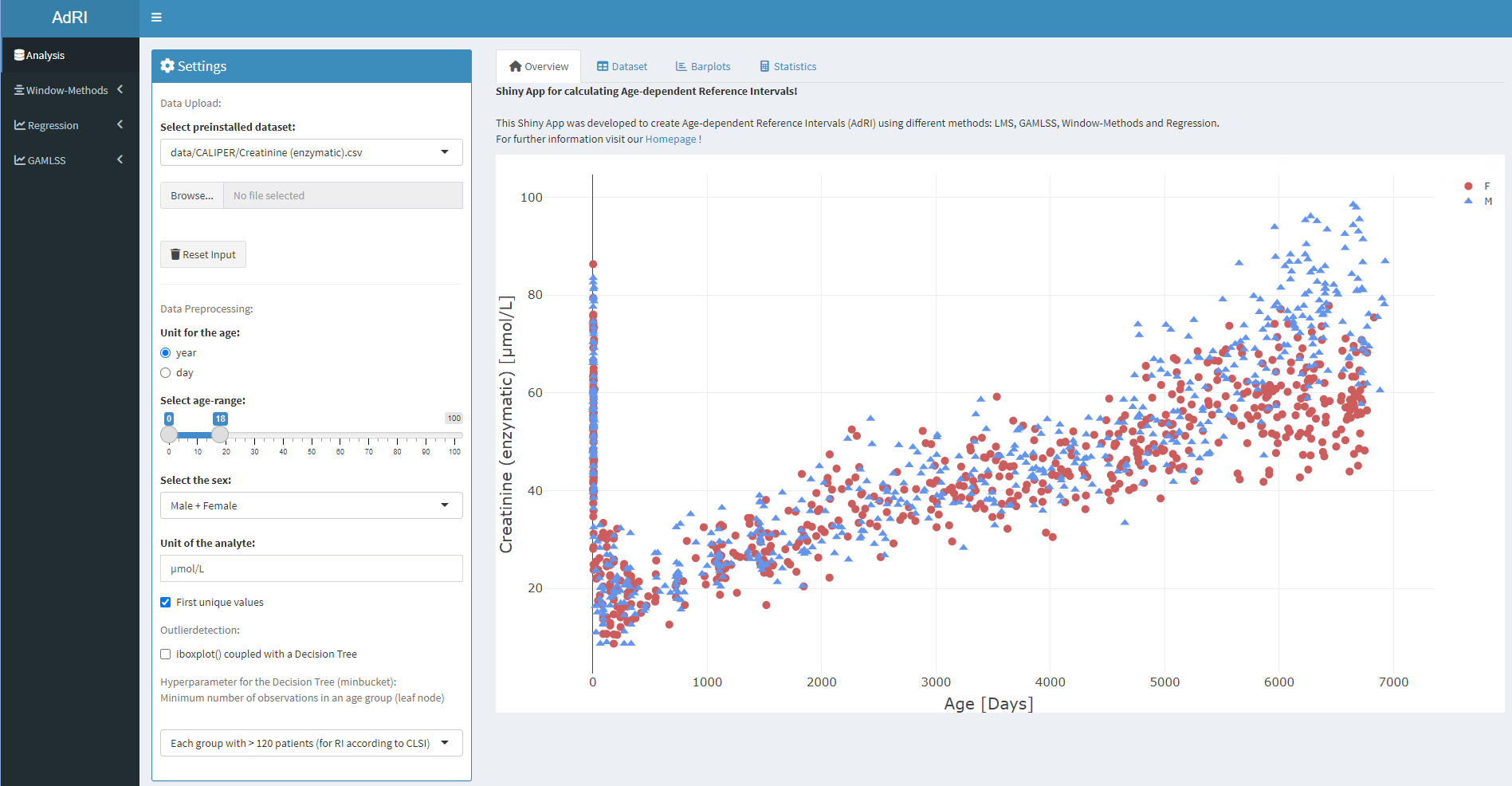Home — Installation — Dataset — Methods — Guide — About
This Shiny App was developed to generate Age-dependent Reference Intervals (AdRI) using various statistical methods. These include the LMS method, GAMLSS (Generalized Additive Models for Location, Scale, and Shape), Sliding Window Methods, and Regression Analysis. These approaches allow for precise modeling and adaptation of reference intervals across different age groups, facilitating robust statistical analysis and visualization of age-dependent measurements.
Reference Intervals are established using the central 95% range of measurements, defined by the 2.5th and 97.5th percentiles. The CLSI guideline recommends a minimum sample size of 120.
The distribution of the data for the LMS-Method is selected from the Box-Cox Cole & Green Distribution (BCCG), Box-Cox Power Exponential Distribution (BCPE) or Box-Cox t-Distribution (BCT) and for GAMLSS additionally the Normal-Distribution (NO) and Log-Normal-Distribution (LOGNO). The models are created with the package gamlss. The GAMLSS Models have different additive terms for smoothing.
Currently four Window-Methods are available: regular Windows, Windows with age groups from a Decision Tree or given age groups from the Laboratory Information Systems (LIS) and the Sliding Window-Method. There are also four types of Regressions. The Decision Tree from rpart for age-portioning has two hyperparameters minsplit and cp. minsplit stands for the minimum number of observations that must exist in a node in order for a split to be attempted and cp represents a complexity parameter. Sometimes it can make sense to lower the cp for increased age dependency and more age groups.
* **Warning! This Shiny App has not been enough validated for the basis of a medical diagnosis! There is no warranty for the app and/or the reference intervals! ***

Link to the publication: A visualization tool for continuous reference intervals based on GAMLSS Automated sex and age partitioning for the estimation of reference intervals using a regression tree model